01 Aug 1 Hour Macrophotography – all the species I found
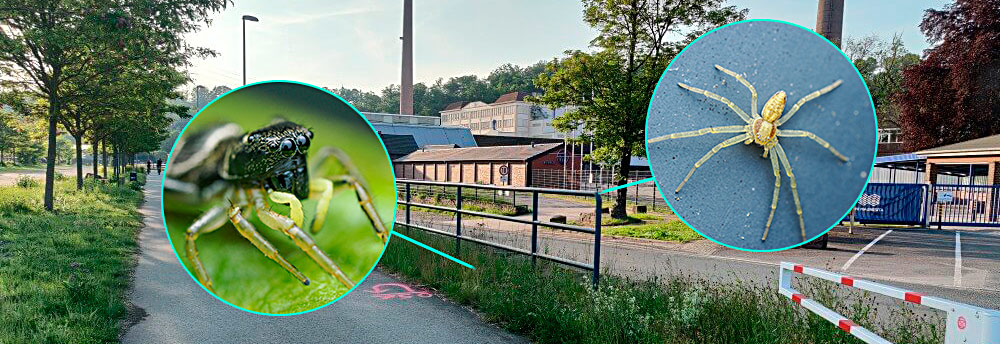
One thing that extremely fascinates me about Macro Photography, is, that it often makes me realize how many diverse species live right under our nose (or feet) without us even noticing.
It fascinates me even more, how many species we can discover as soon as we actively start looking – and how many of them can be found in a relatively small area.
Last week I decided to do a short field trip to a spot, which is particularly rich in Jumping spiders.
It is not a spot you would assume is a great habitat to find many motifs for Macro Photography – but it proves you wrong if you go there by the right time, quickly.
As it is still early for this year´s Macro season and spring is only just to start, I went to the spot to check which species are already active there.
I spent 1 hour photographing as much as I could.
Here is how it went – I took 460 Photos (more if you want to count those that i deleted).
It is incredible how many different species you can find in such a short amount of time. All you have to do is literally “look”!
The habitat
The ‘main attraction’ is a metal handrail / fence with a strip of relatively low-growing, often dry, plants in front of it, seperating it from a walk way for pedestrians in an old industrial but almost rural area.
Every couple meters we can find evening primroses, or sun cups during summertime – which is why I want to get back to the spot during the night soon, as they attract nocturnal insects and moths.



On the other side of the handrail, and the 2,5 meter high brick wall that is is build on, one level down, there is a street, with old red brick factory buildings opposite of it.
Kestrels can be found nesting there in openings, which is another highlight of this suburban spot.


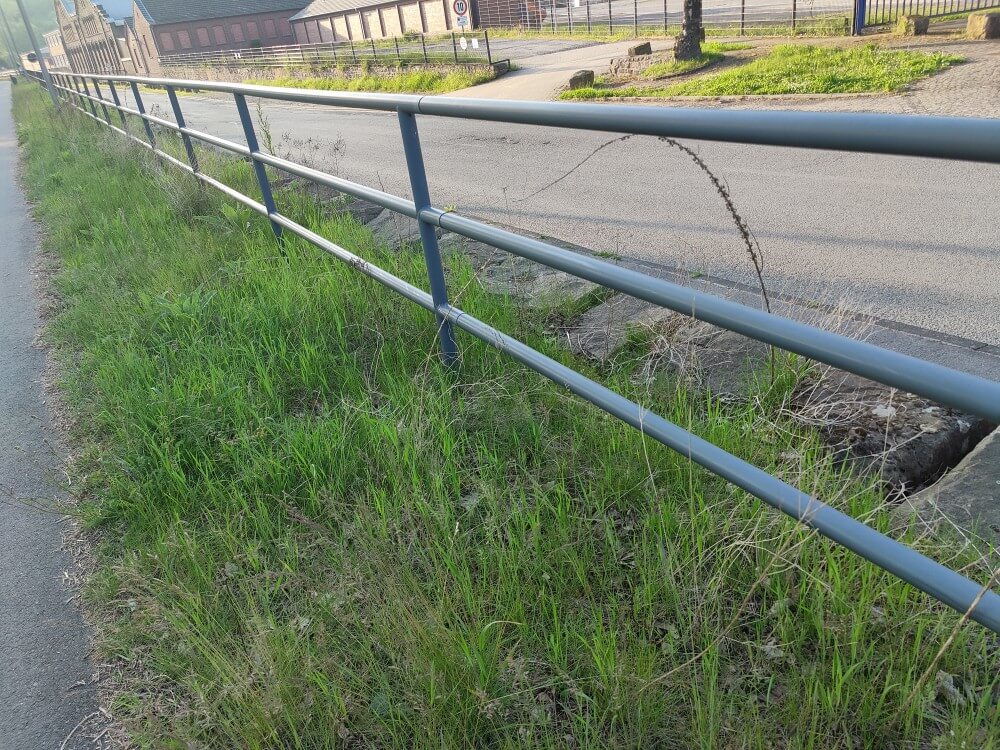
For a good 300 meters, this habitat follows along the street and seperates the street from an old railroad complex on the other side.
My attention is on the handrail and the narrow strip of vegetation in front of it.
The time when i visited the spot was also interesting, as it influenced the disappearance and appearance of the different species.
Around 18.00 PM it was still bright, but the direct sun was gone already, which meant that the Jumping Spiders were not as active as during the middle of the day.
Simultaneously, I could see the nocturnal Orb Weavers start setting up their webs.
It really felt like a ‘changing of the guard’.
The Inhabitants of the Habitat
Jumping Spiders
Heliophanus sp. (most probably H. cupreus and H. flavipes)
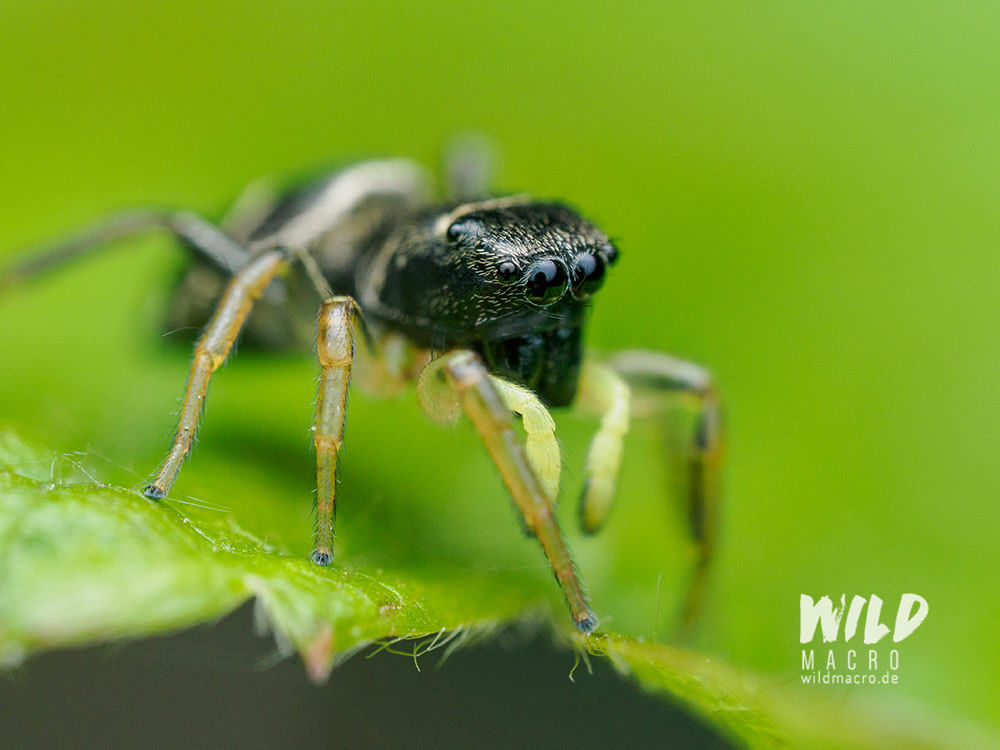
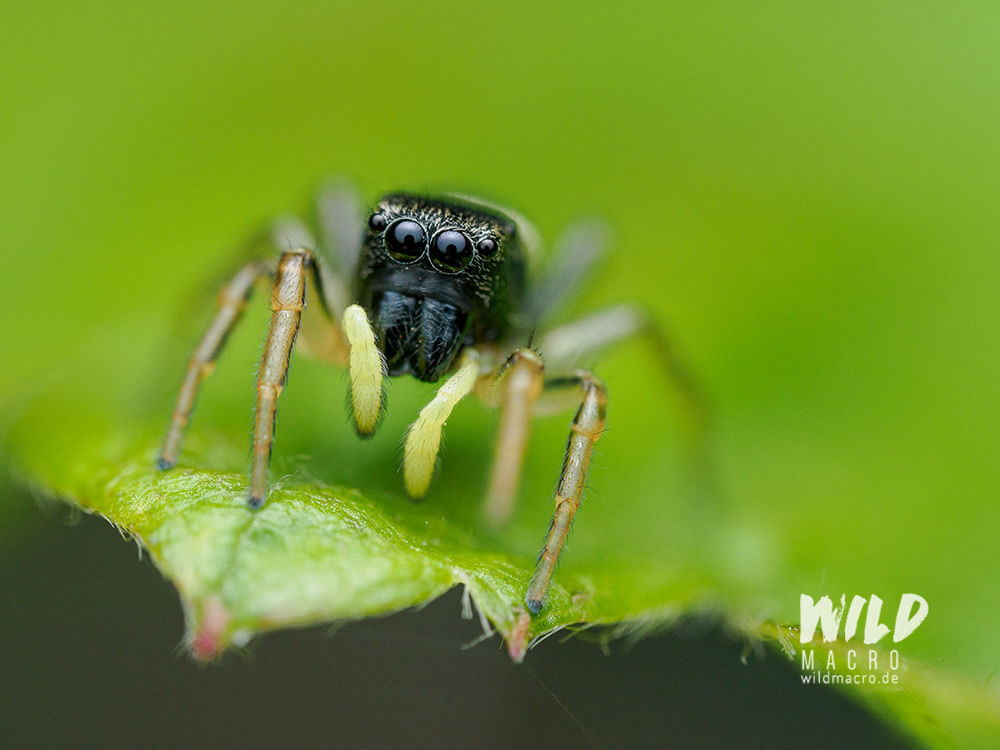
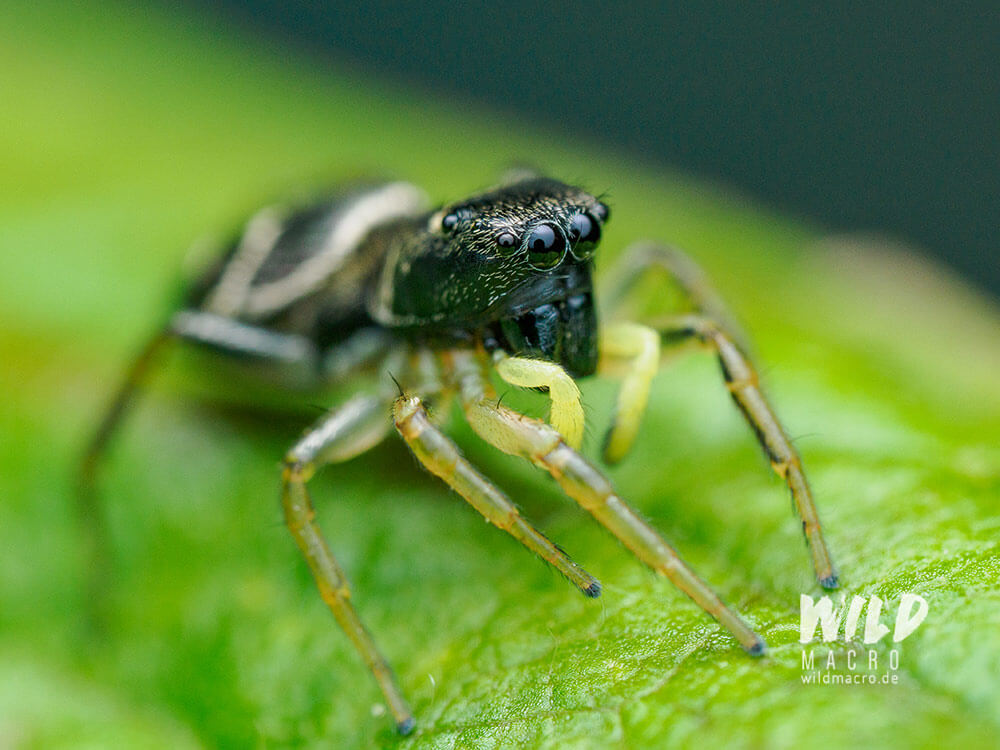
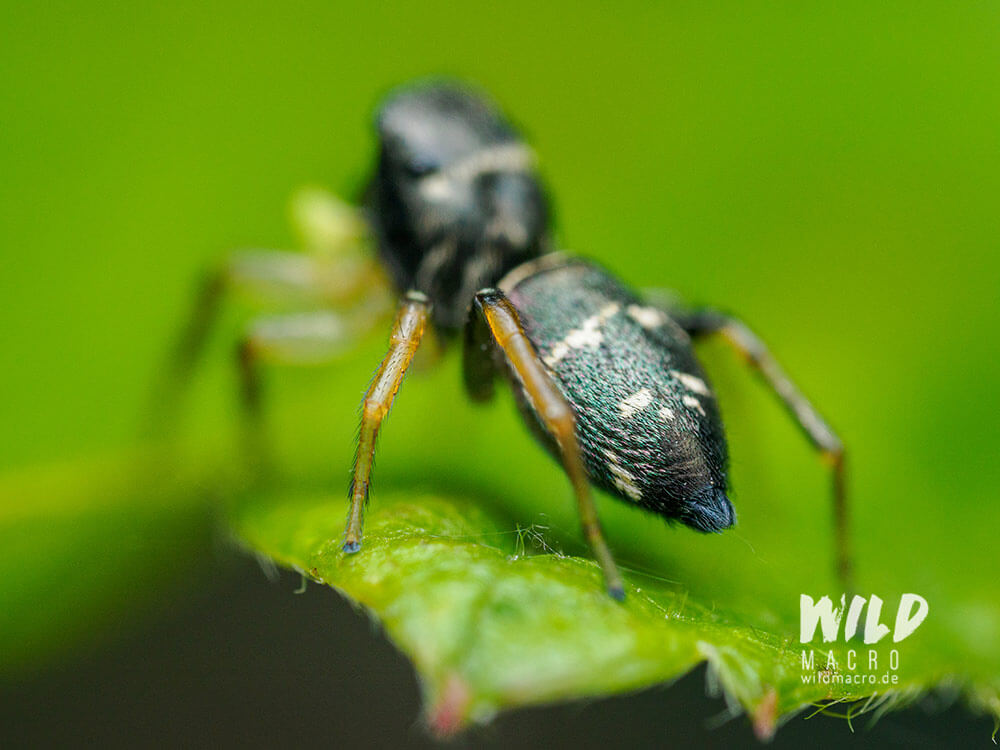
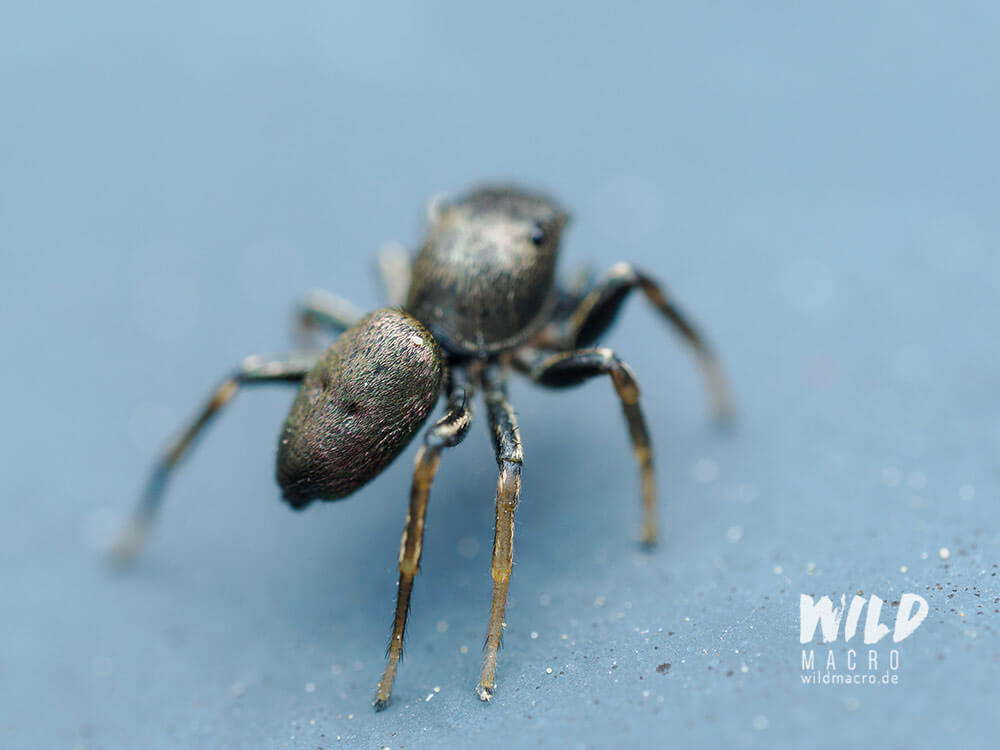
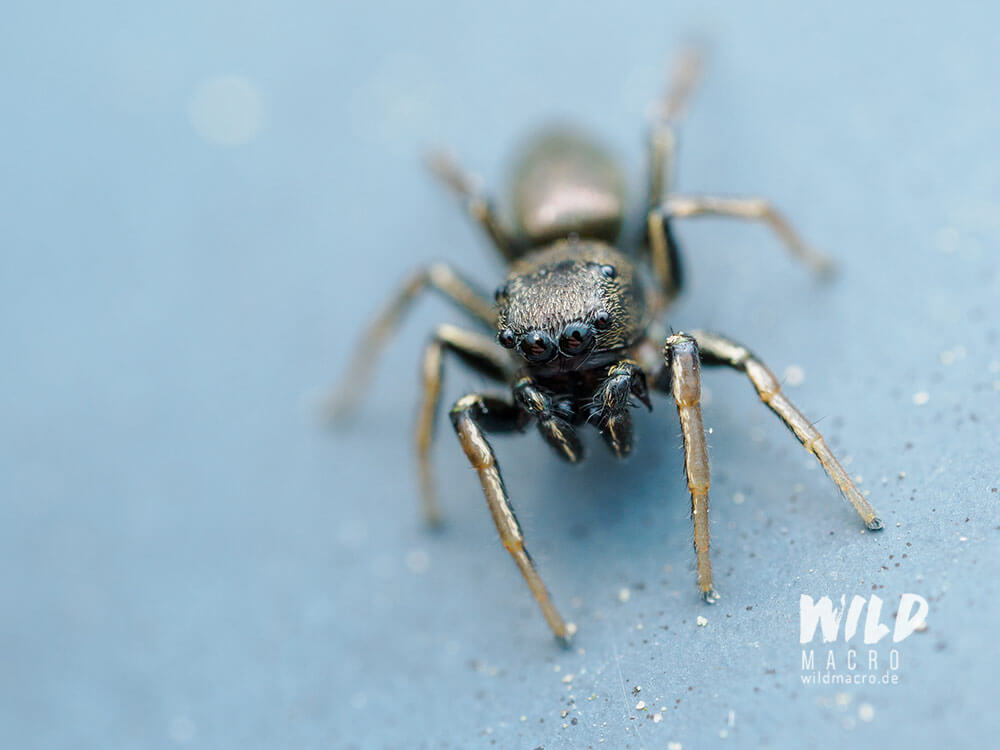
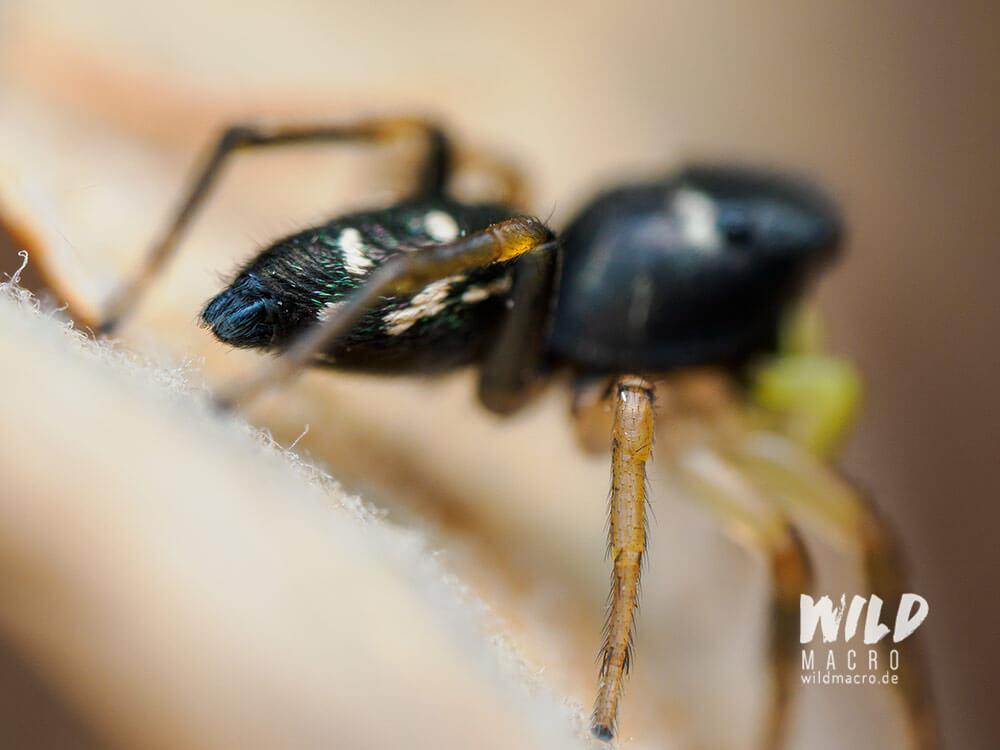
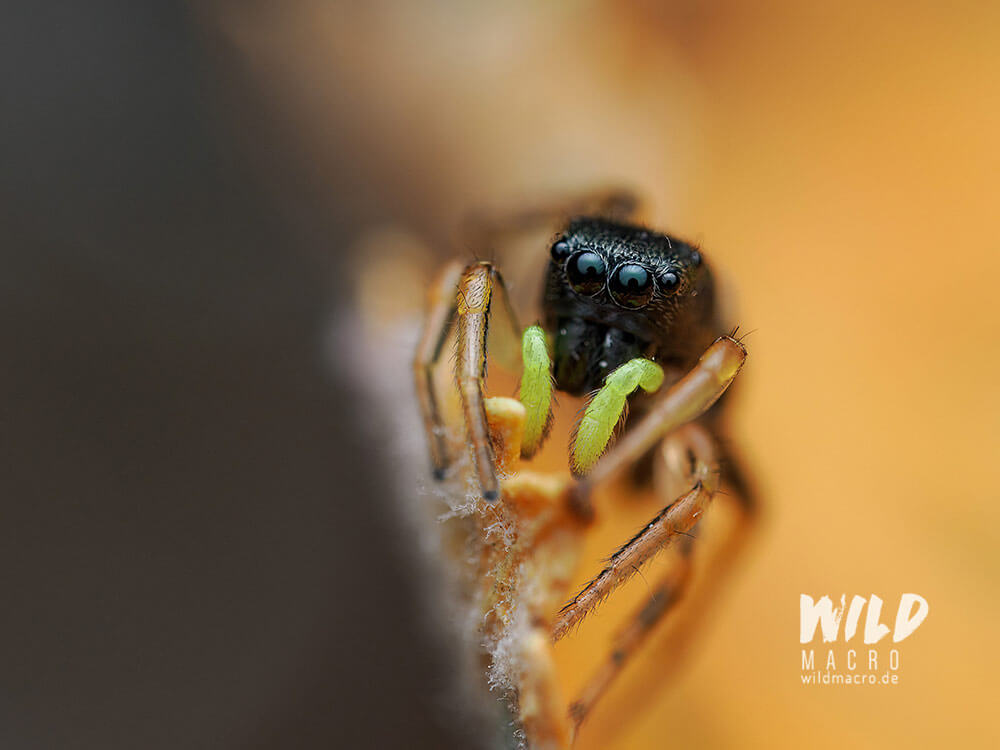
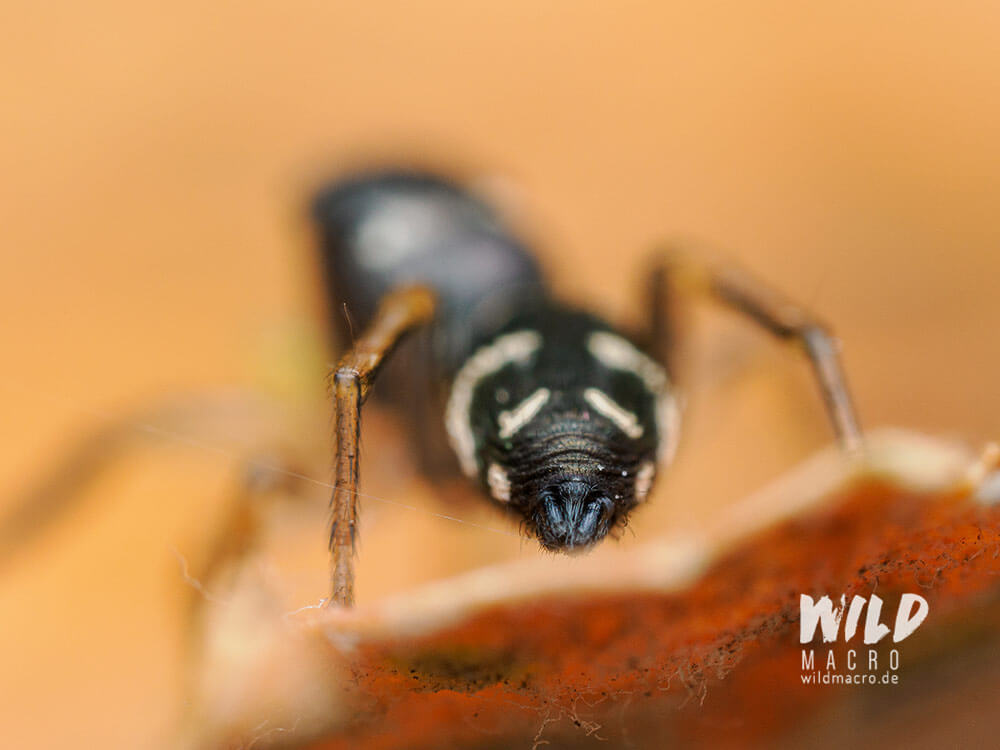
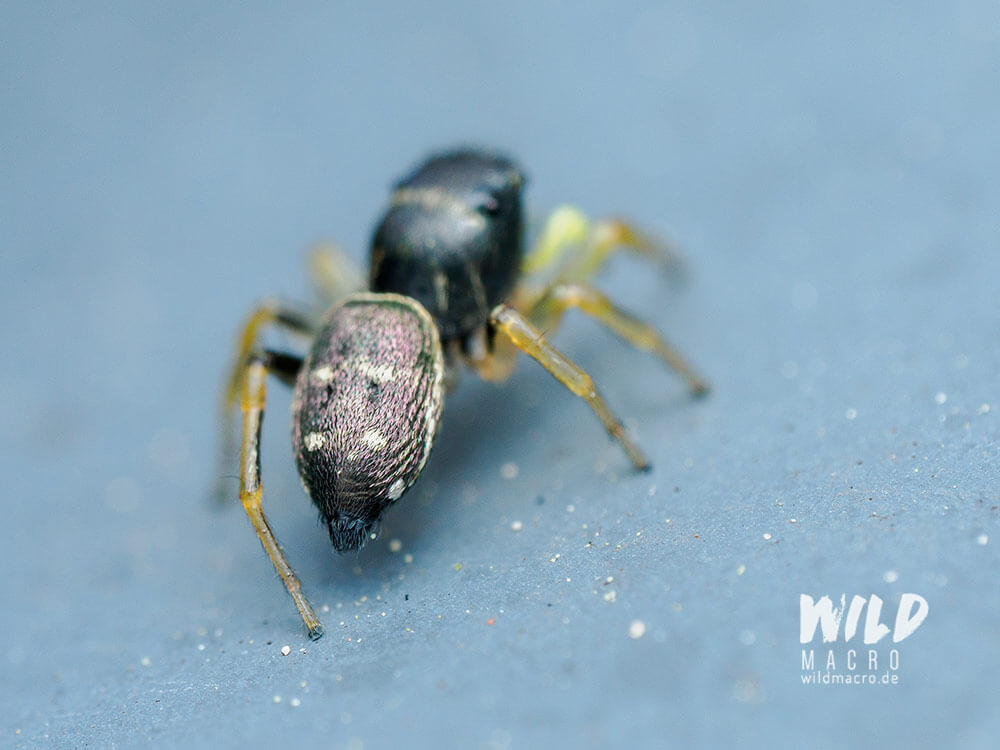
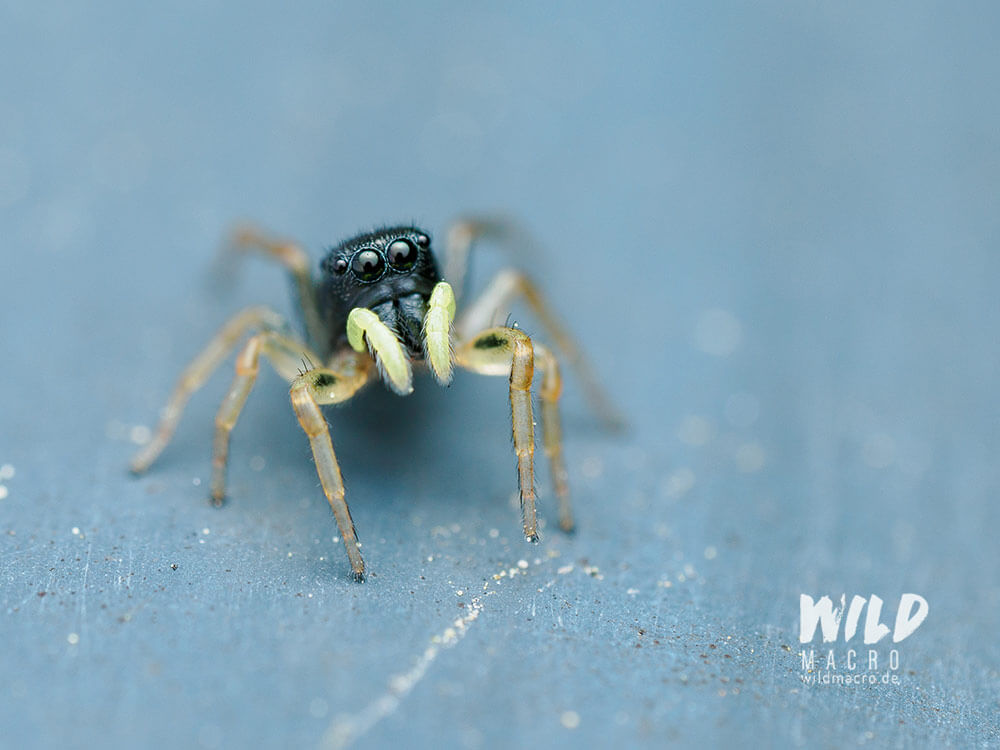
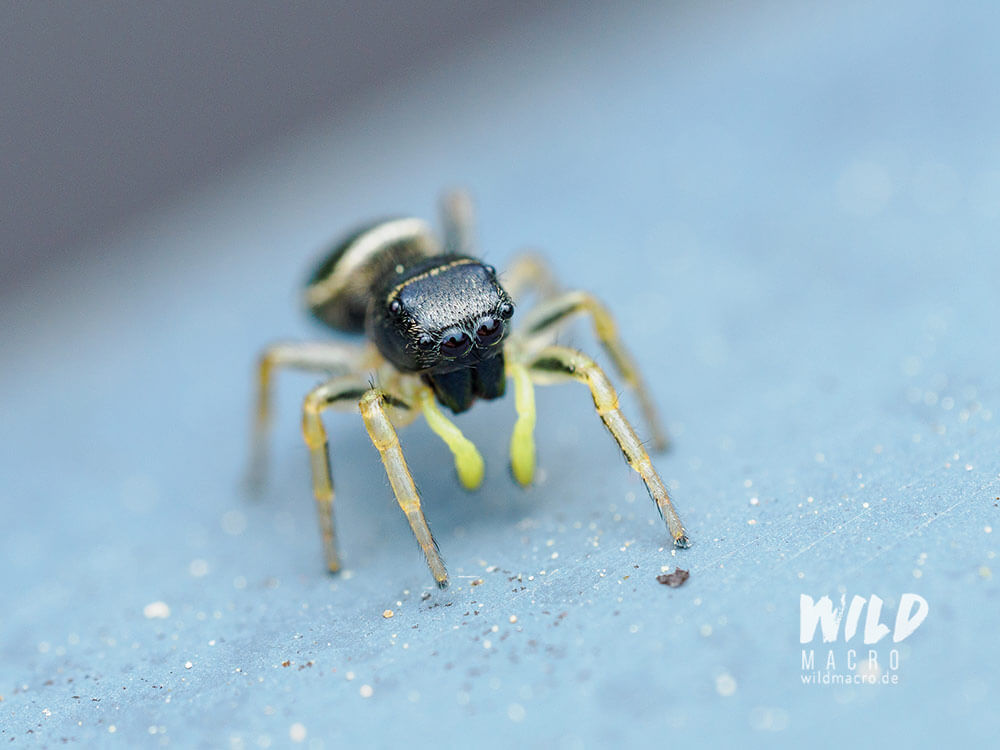
Phlegra fasciata
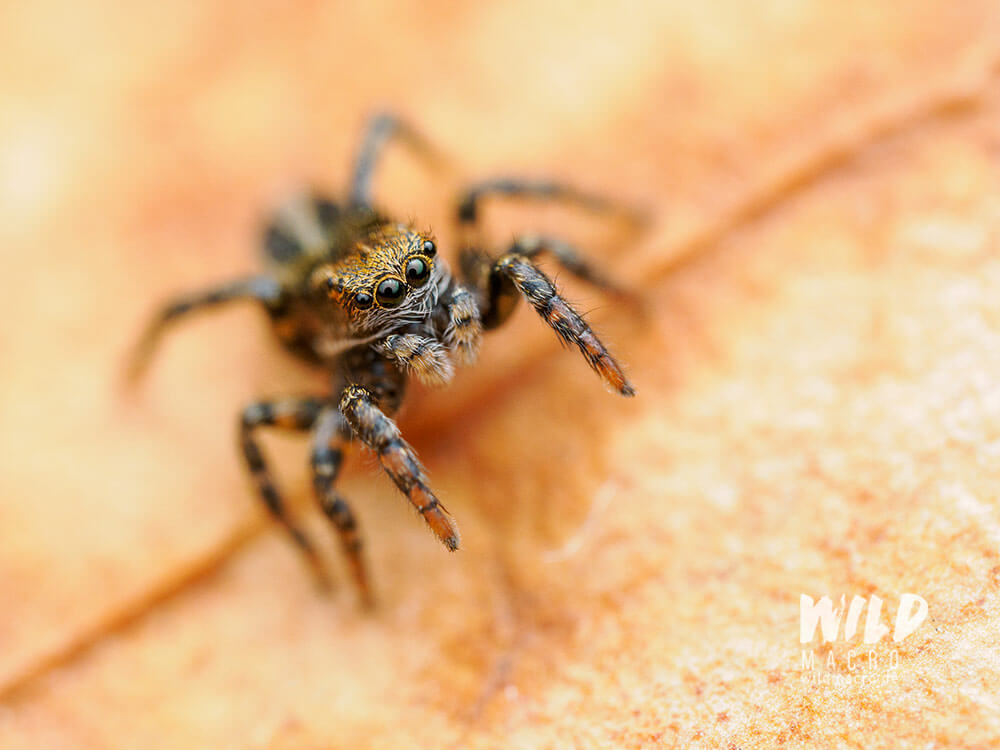

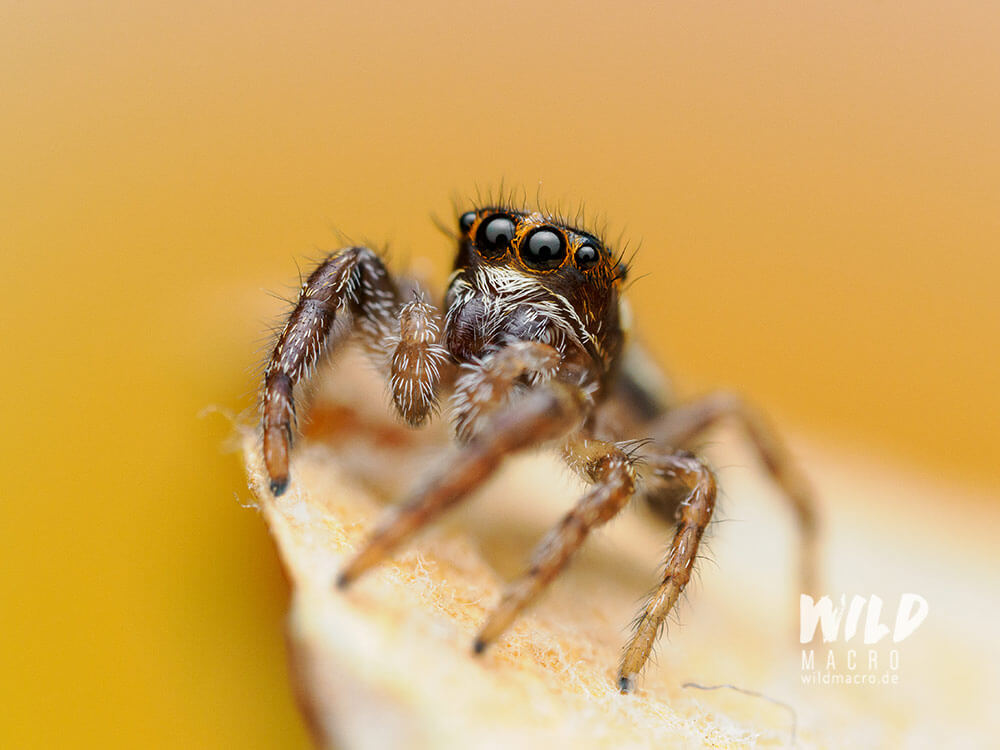
Salticus sp.
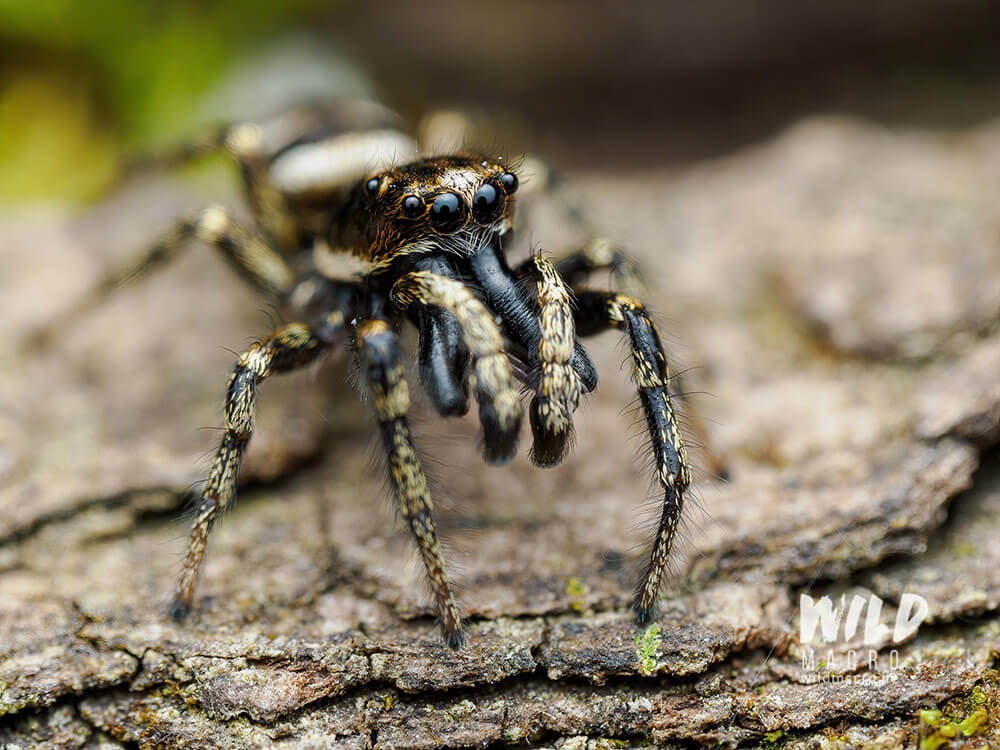
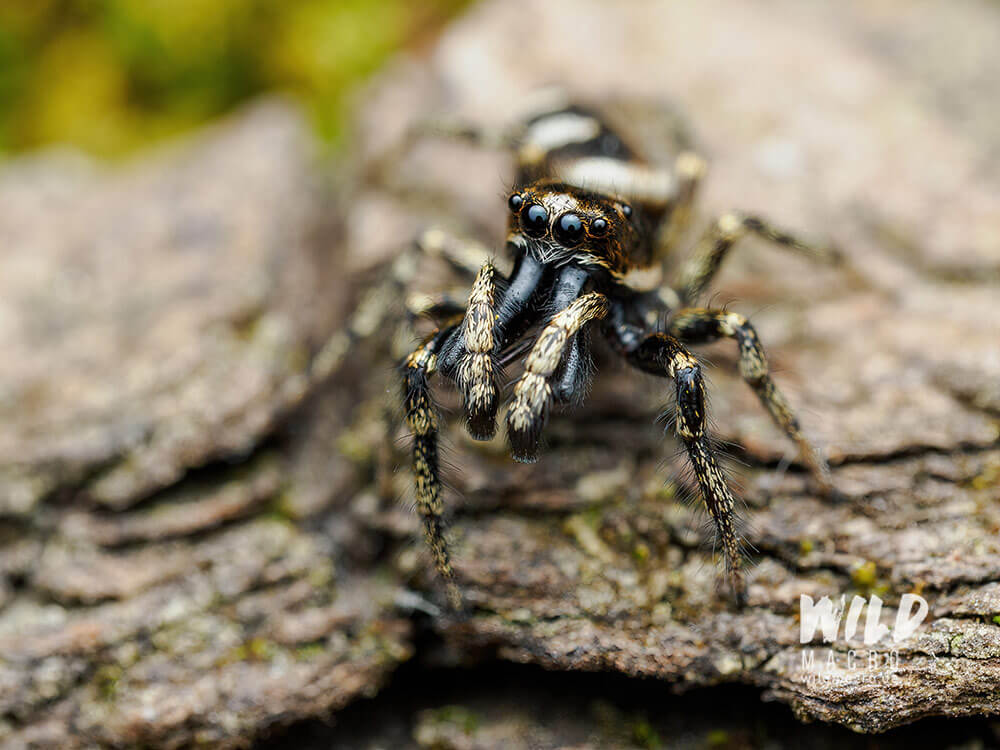
Other Jumping Spider species to be normally found in this habitat
I did not see any this time, but I have also found other Heliophanus species and, if i remember correctly, one Macaroeris nidicolens specimen, there.
Marpissa muscosa do live there, but are considerably fewer in numbers compared to the other salticid species.
Running Crab Spiders / Philodromids
The dominant species are Philodromus rufus, Philodromus aureolus and at least 2 others, which I could not identify yet.
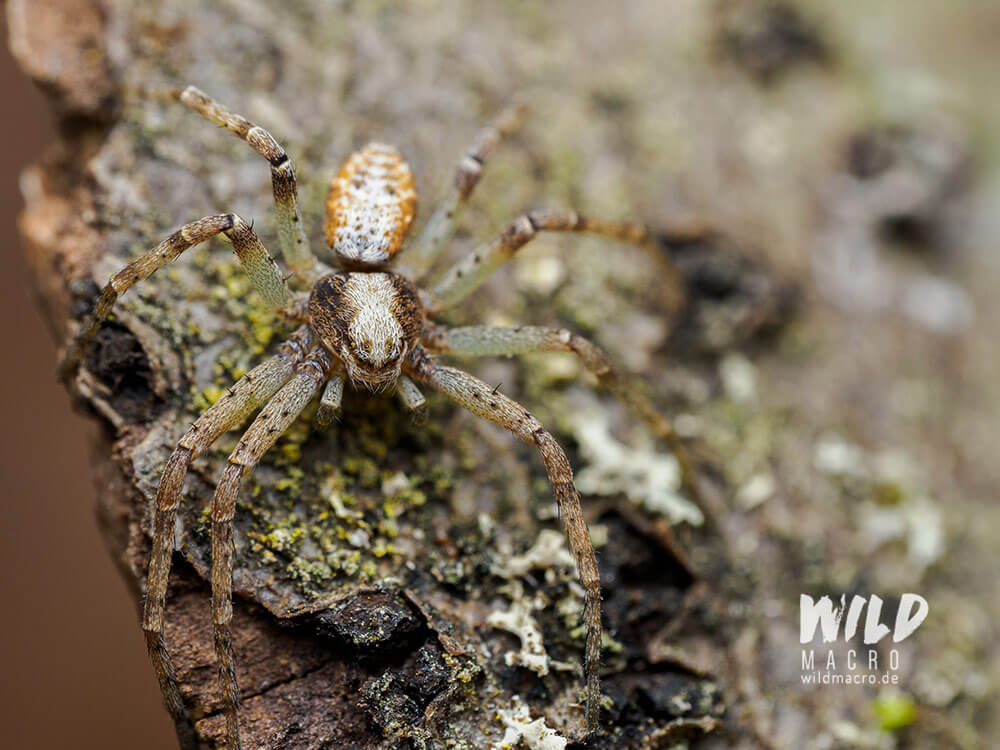
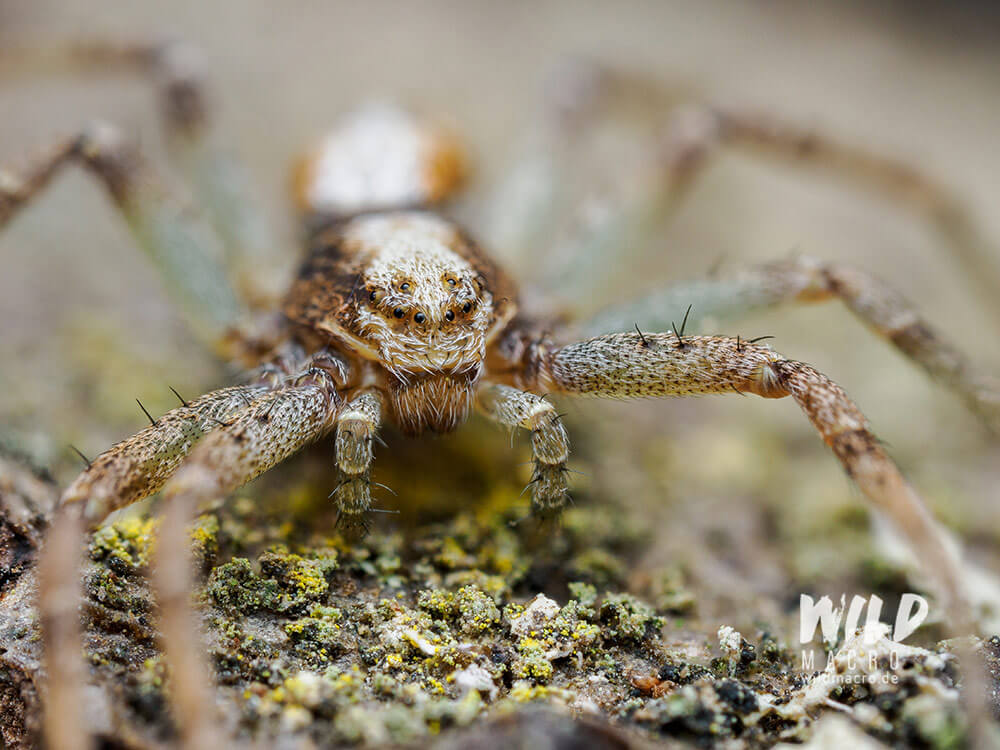
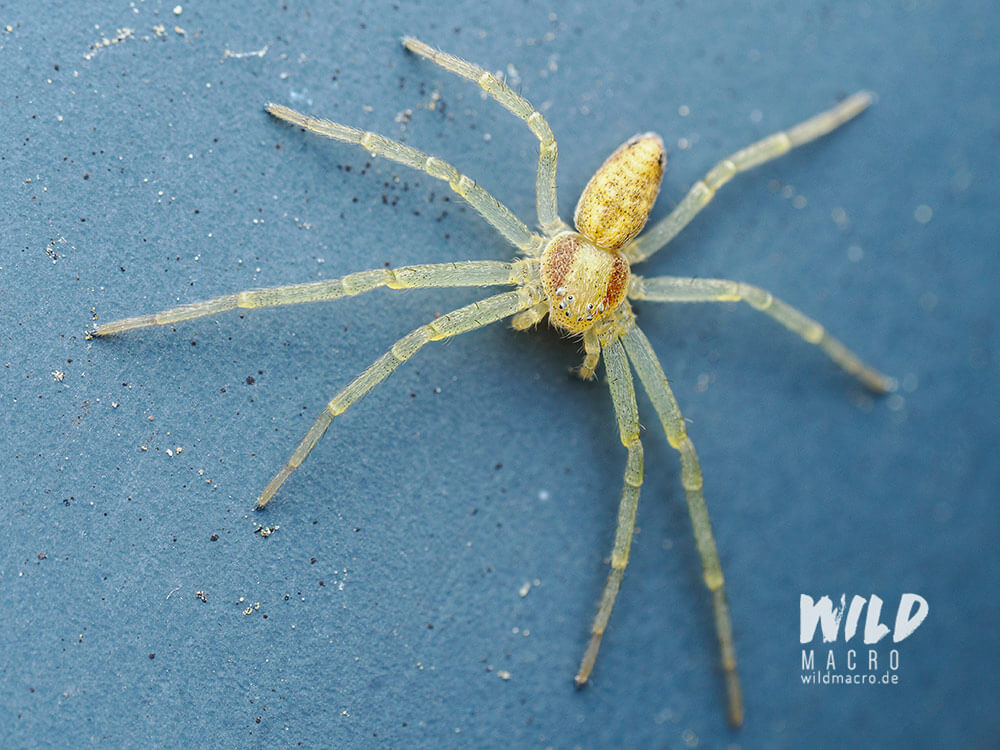
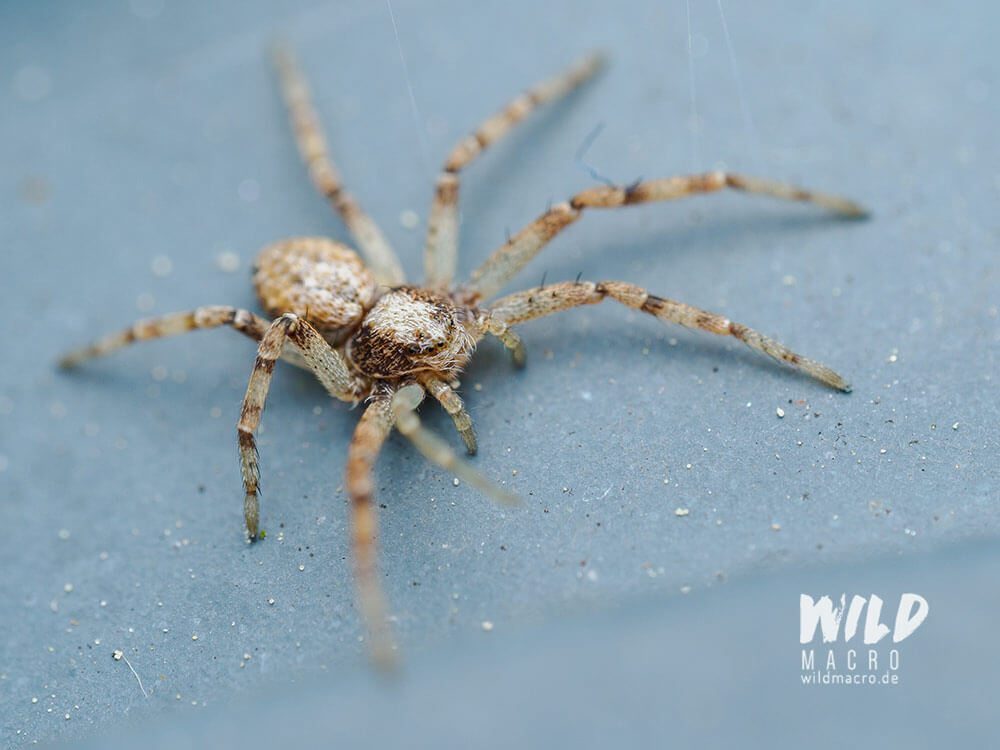
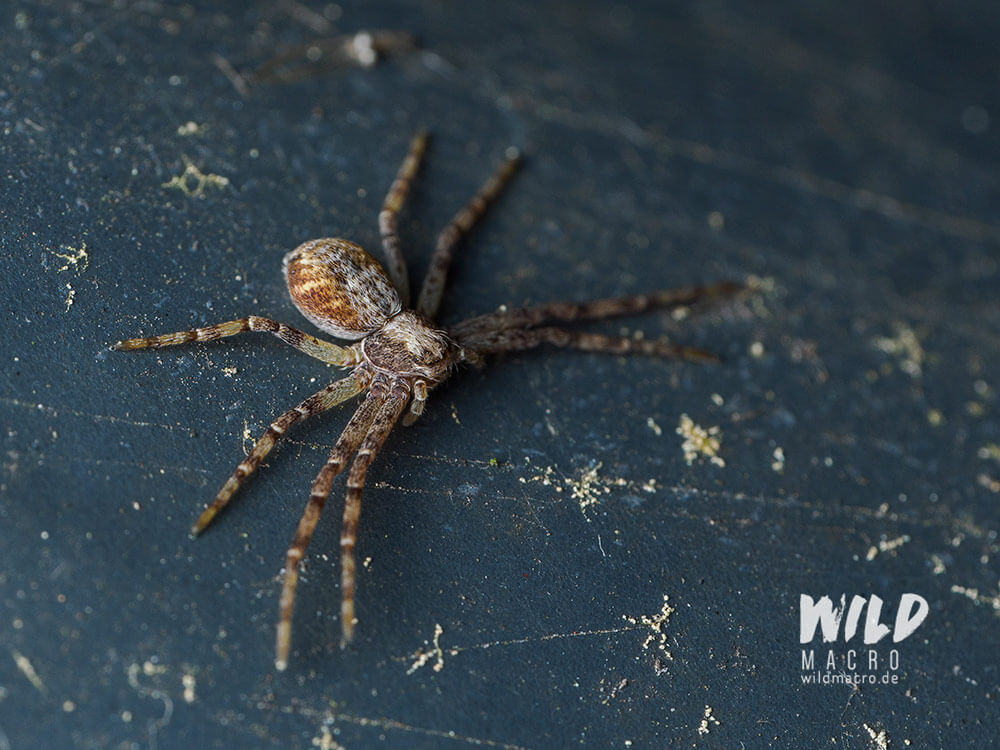
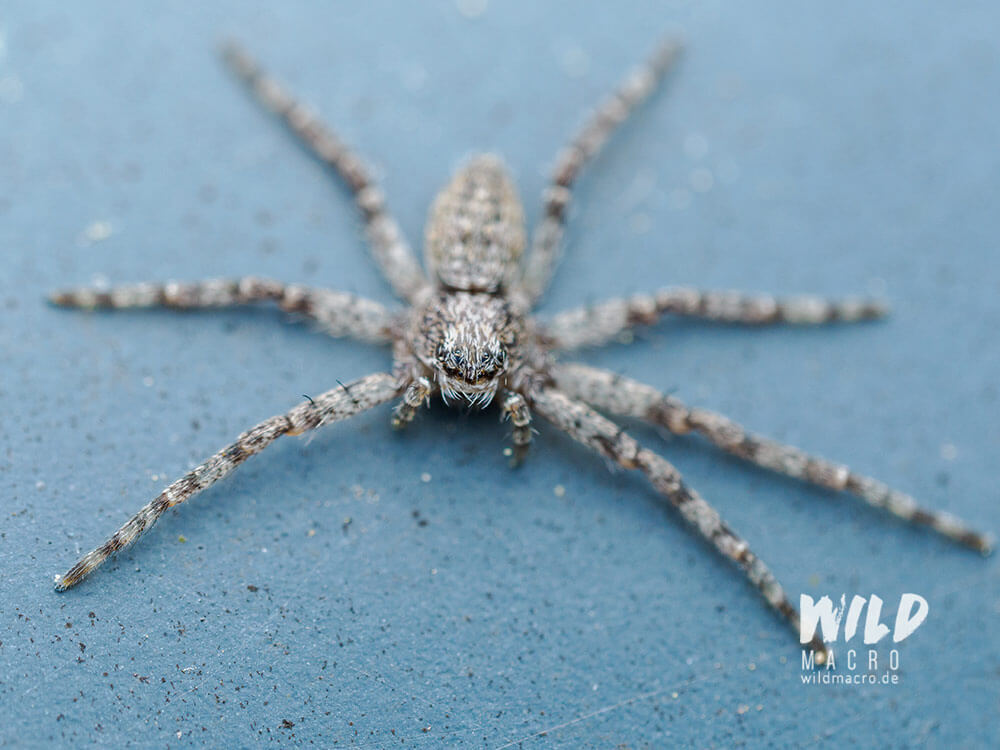
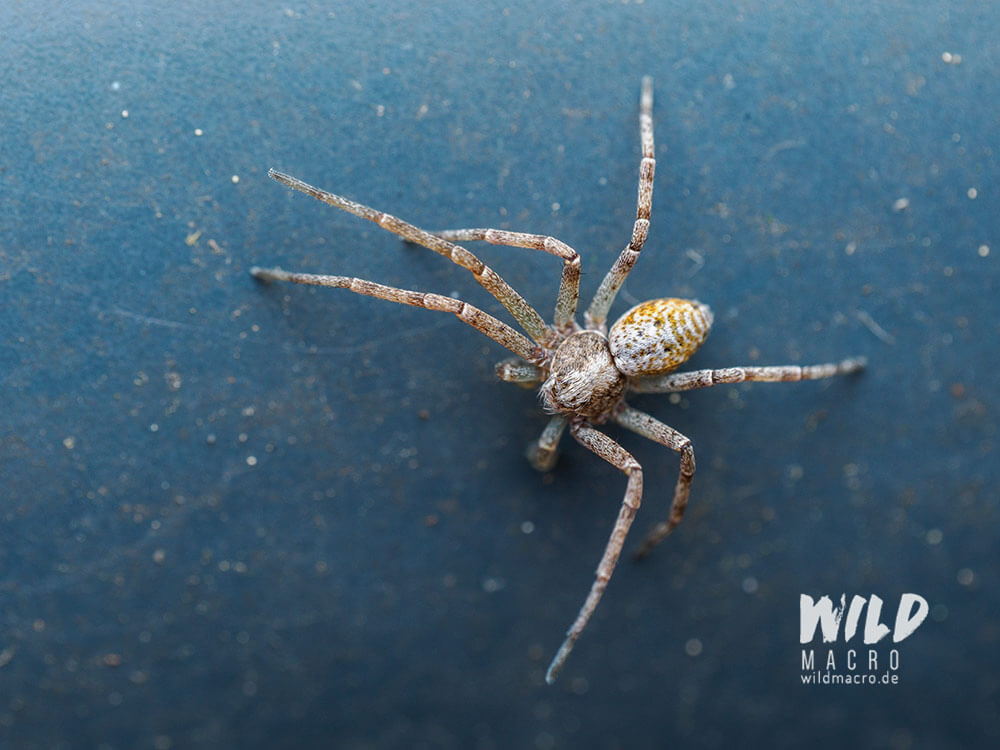
Orb Weavers
Cucumber Green Spider (Araniella cucurbitina)
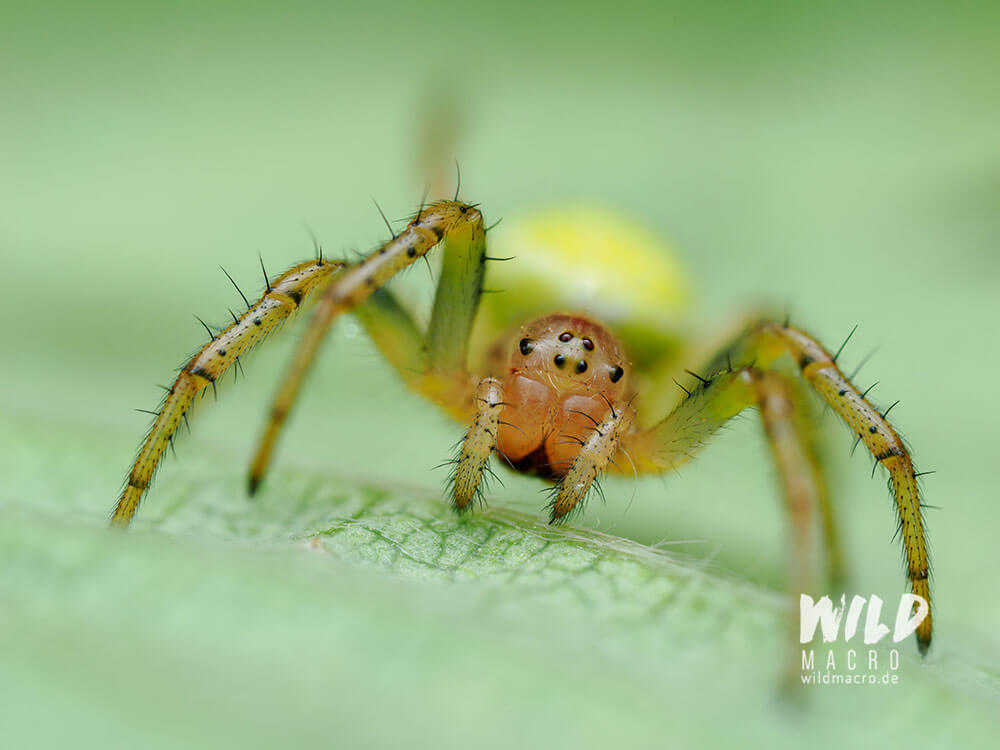
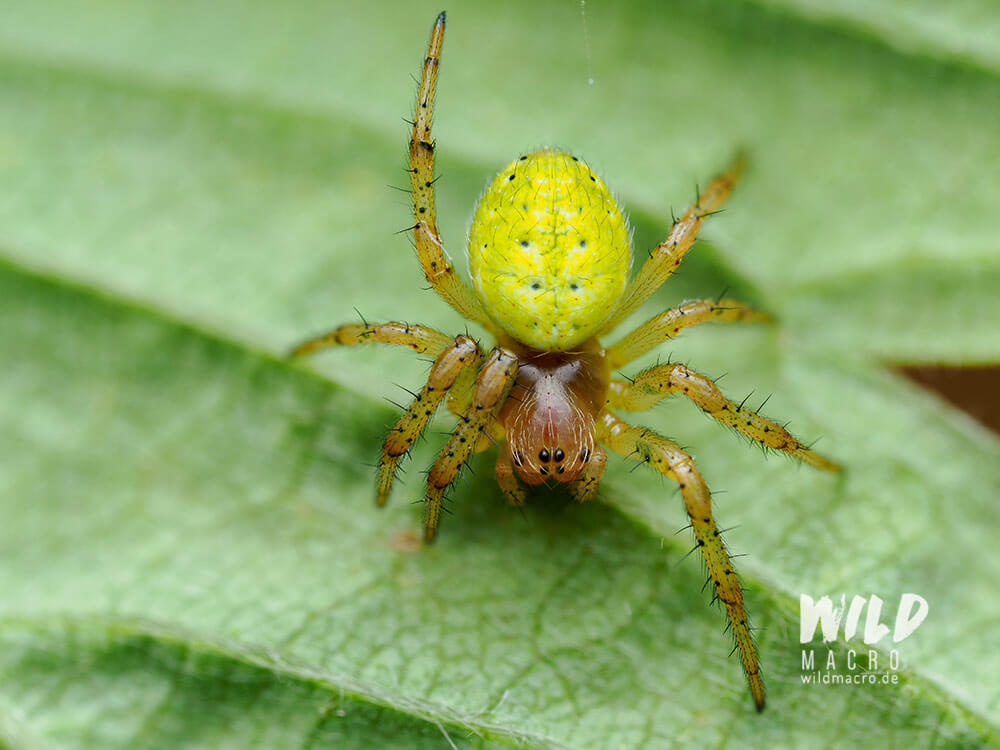
Bridge Spider (Larinioides sclopetarius)
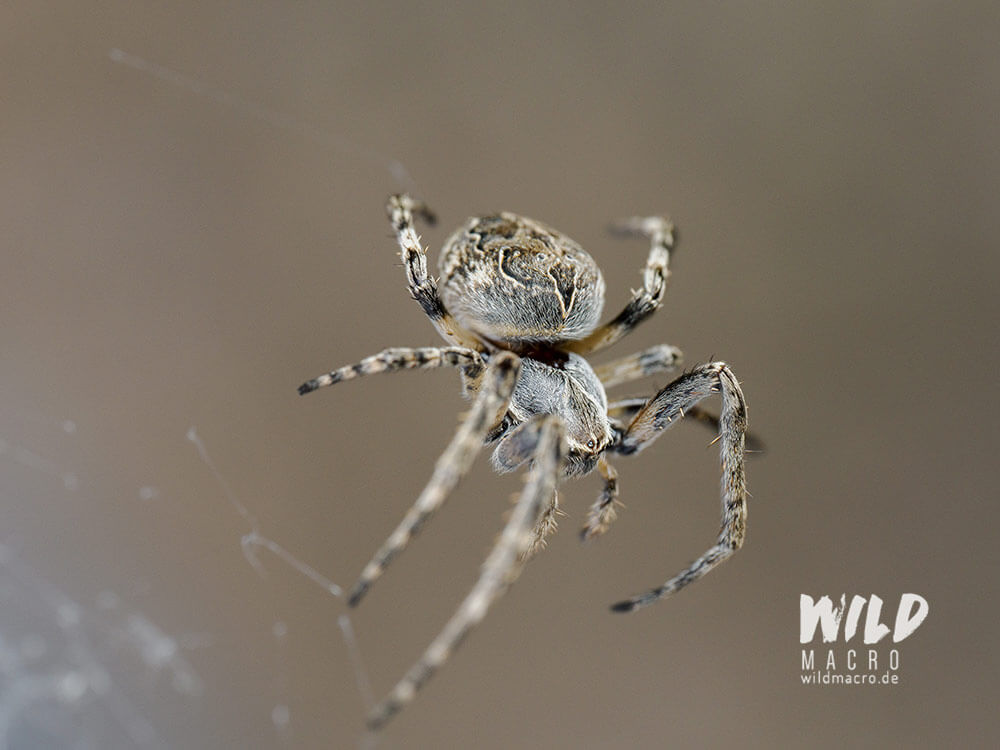
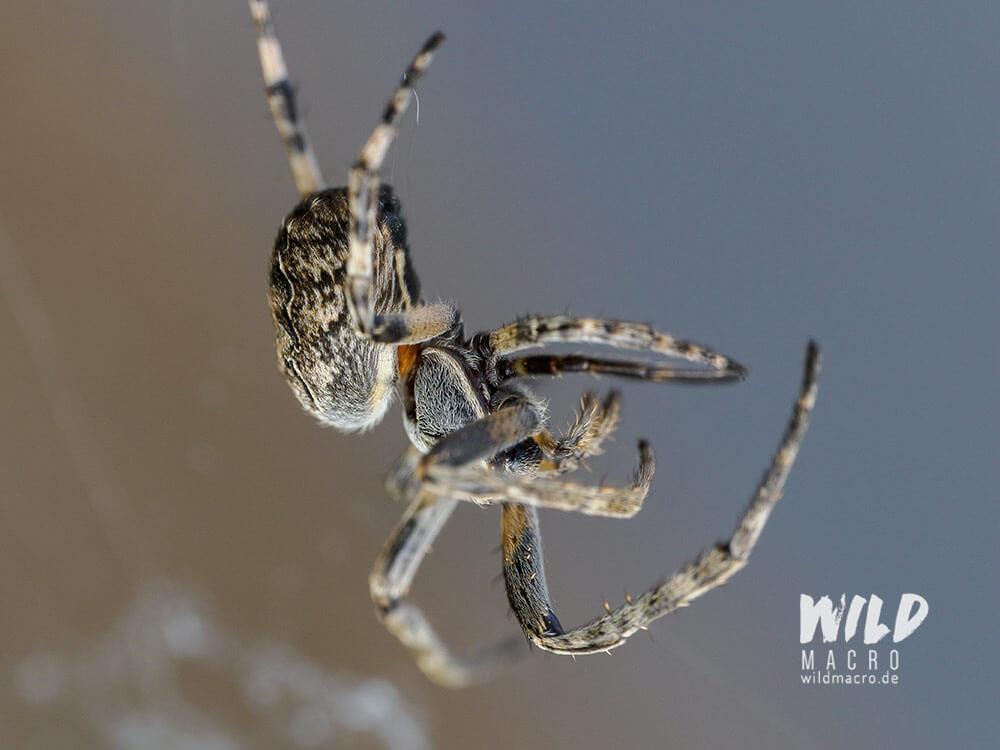
Humped Orbweb Spider (Gibbaranea gibbosa)
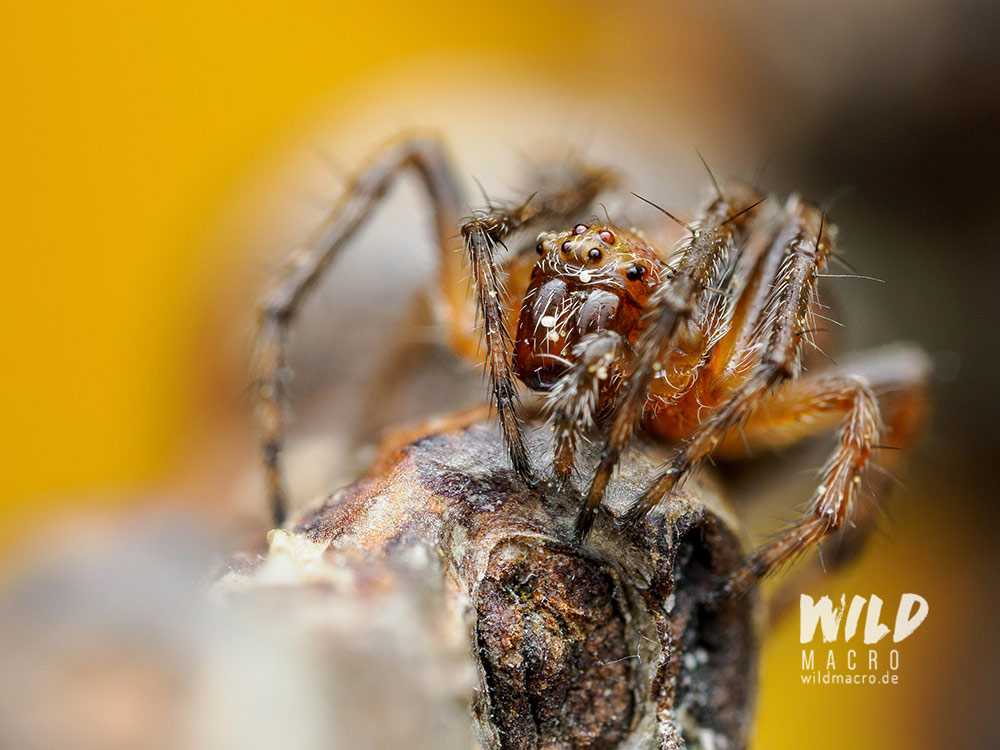
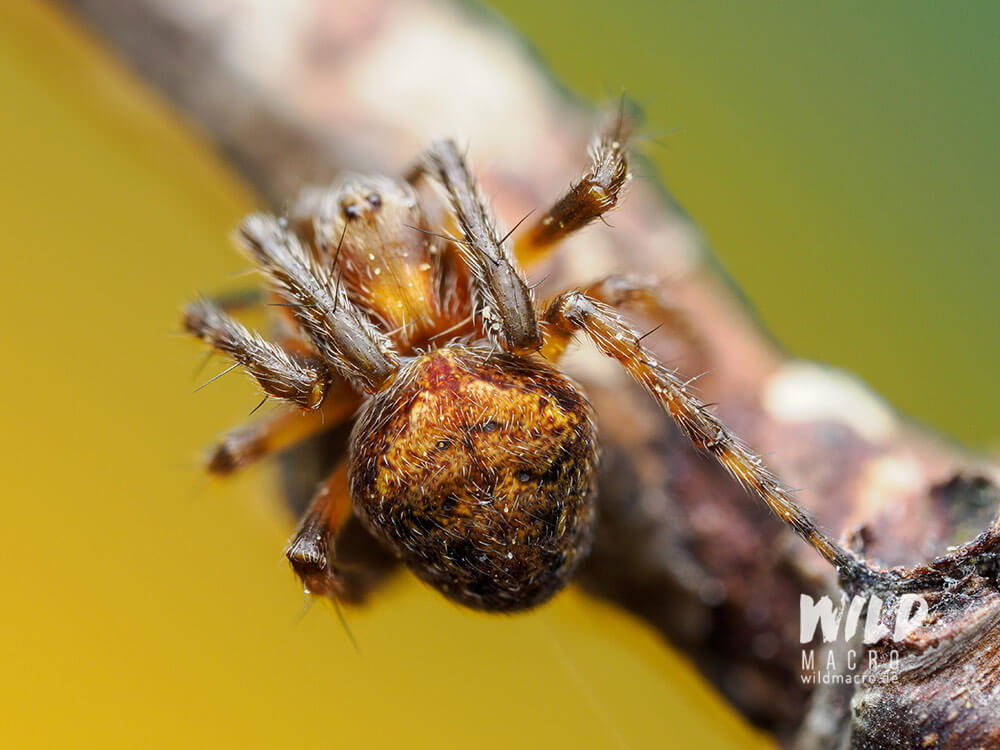
Walnut orb-weaver spider (Nuctenea umbratica)
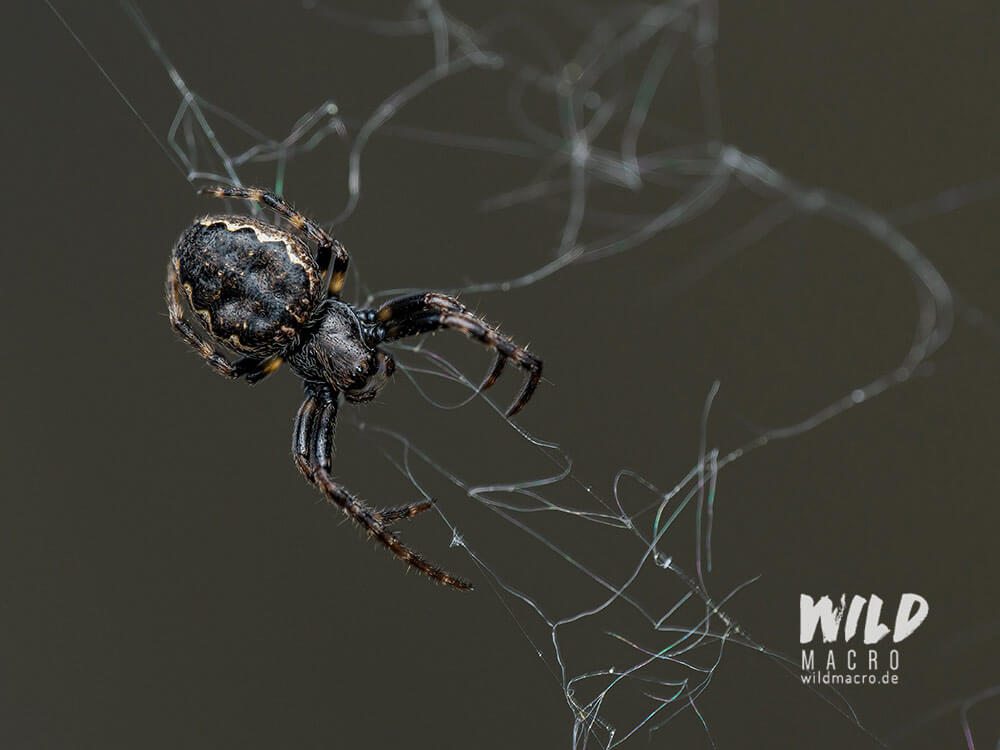
This male was tiny, only 3-4 mm, sitting on a small twig of a dried plant.
I only found it by accident, as I was checking the ground for Salticids.
Long-jawed Orb Weaver (Tetragnatha sp.)
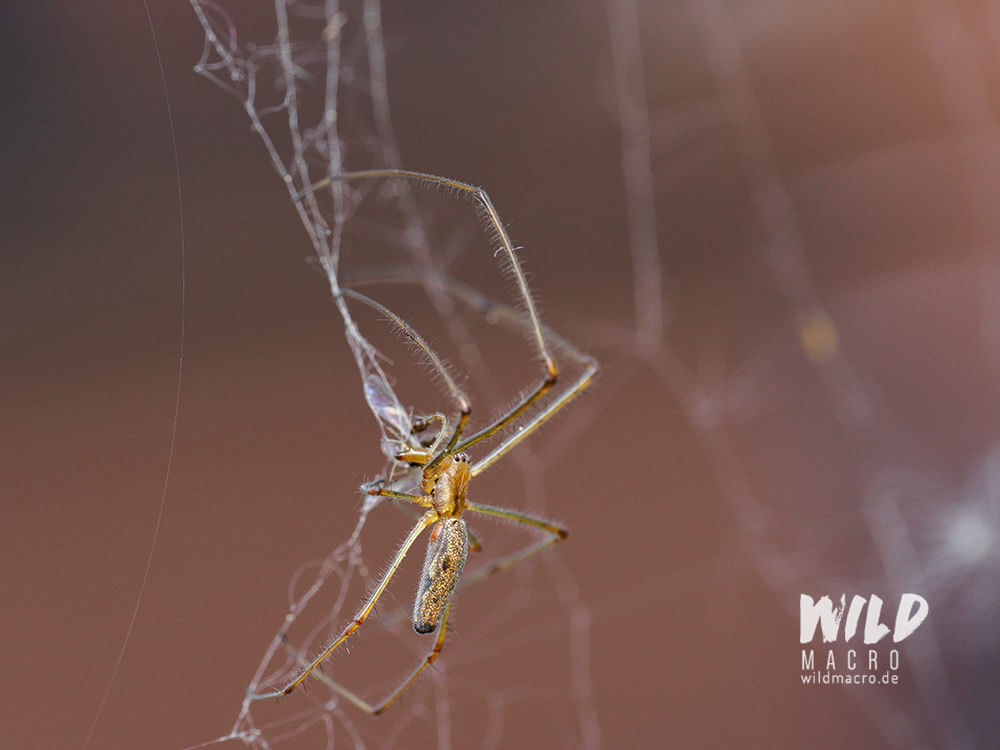
A real surprise find was this Jumping spider that I found in the Tetragnatha´s web.
At first I thought it ended up there accidentally but after looking at the photos back home, I realized that the spider most probably tried to steal a little fly from the web.
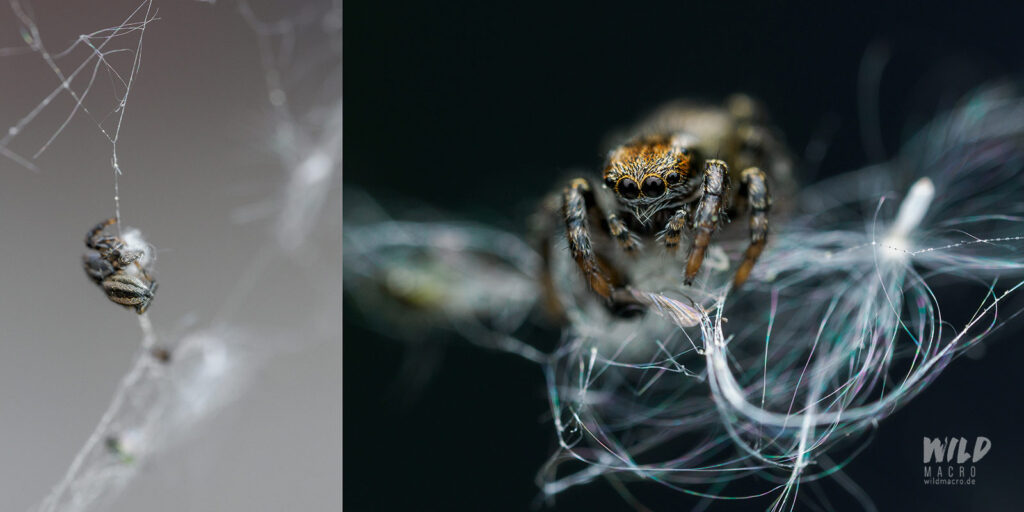
Other Species and Findings
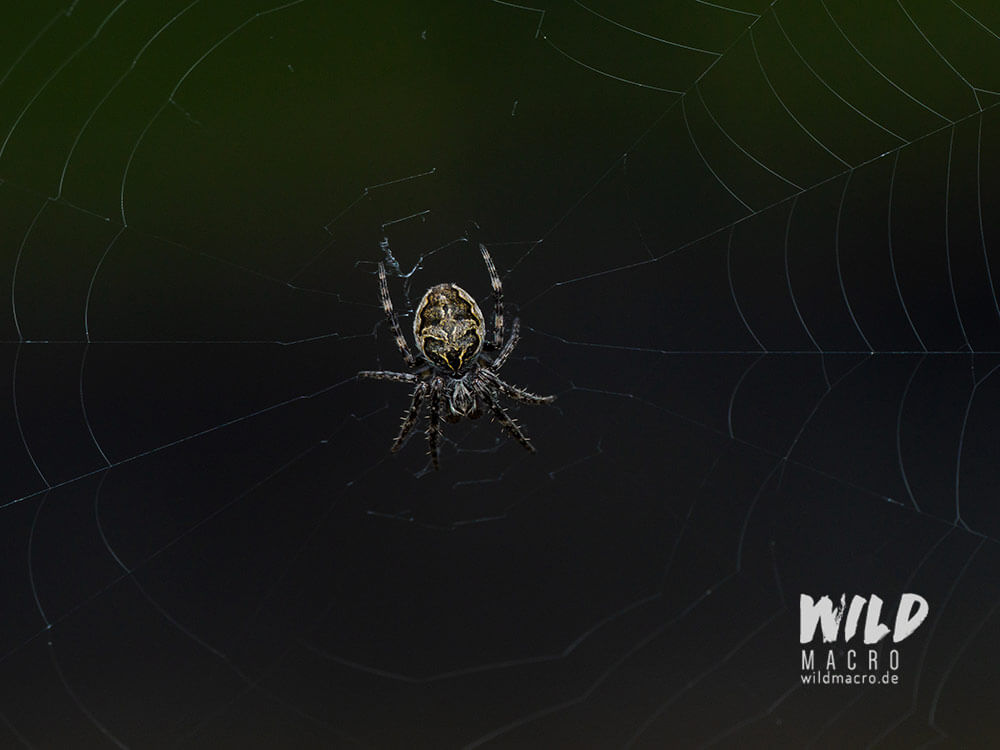
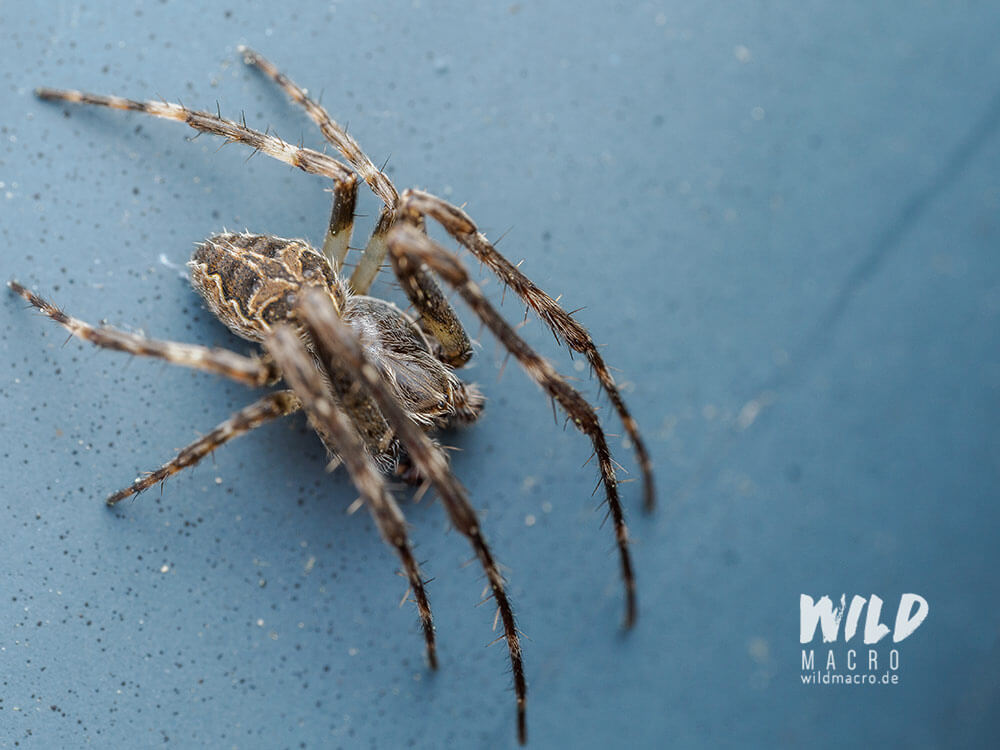
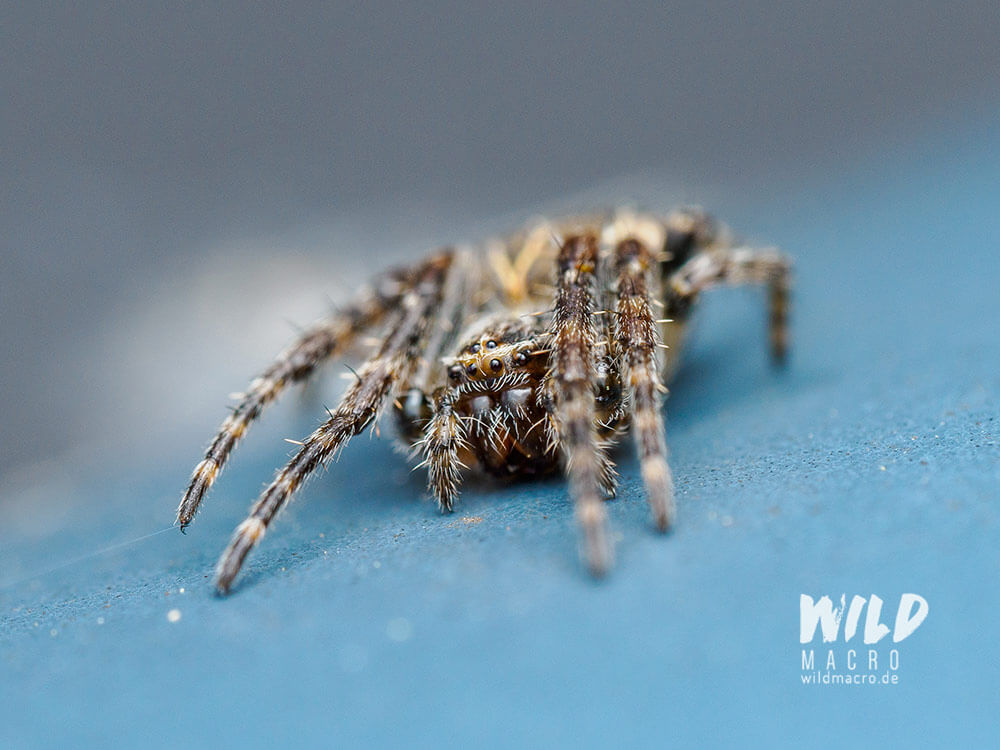
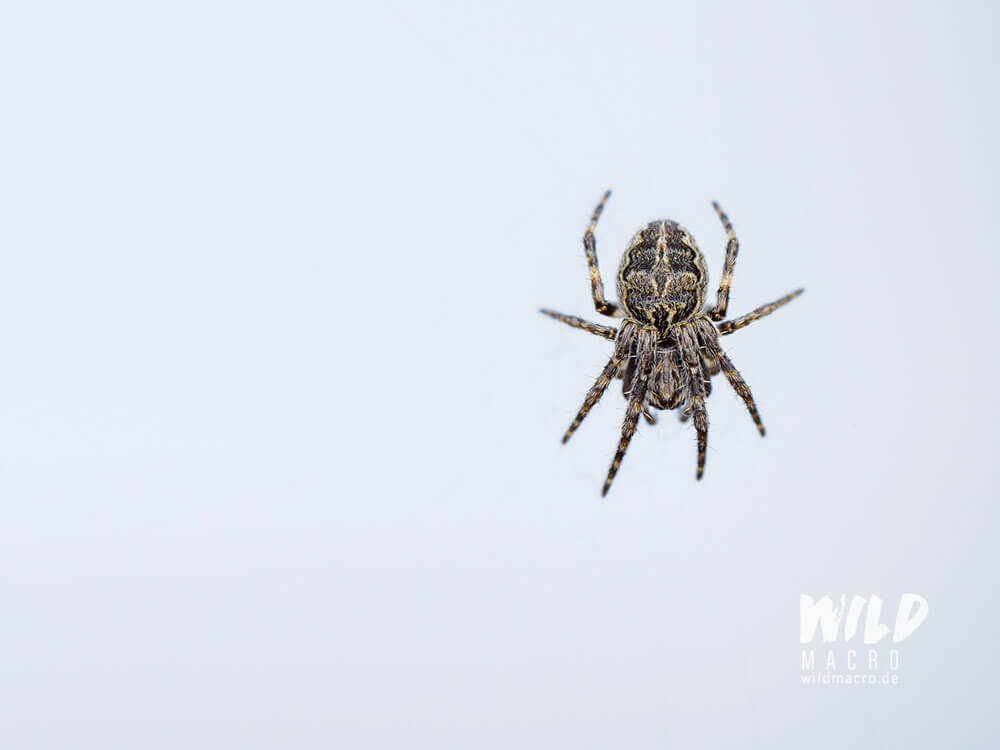
I will come back regularly and see how the populations grow, and if i can even find some species, which I have not seen there before.
However, these are the ones that dominate in numbers and can be found regularly and without having to search for them too long.
Tip: For this kind of mini fieldtrip or project, taking single shots instead of stacks can save you a lot of post-processing time – I wanted this post to be online in May but didn´t find time to process all the stacks… Next time I´ll go for single shots only 🙂
Sign up for the newsletter mailing list & free ebook

Did you enjoy these tips and want to learn more or improve your macro photography skills?
Stay up to date with new blog posts, reviews and tutorial- and ebook-releases.
Sign up below to get notified when the free edition of my ebook
‘How to master spider & insect macro photography’ is ready for download.



Gary Wood
Posted at 01:55h, 17 AugustGreat detailed photos wildmacro, thanks for sharing!
wildmacro-chris
Posted at 13:45h, 18 AugustThanks, much appreciated!